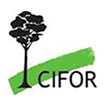Managing wildlife sustainably is necessarily a nuanced and knowledge-led enterprise. Our planet’s wild animals face innumerable threats, from habitat loss to poaching and overhunting to climate change. Yet we cannot and should not sequester all of this wildlife away from humans to keep it safe. In rural and forested areas across the globe, wild animals play critical roles in people’s livelihoods, cultures, and nutritional diversity and security – including as a key source of protein.
Sustainable wildlife management (SWM) seeks to maintain these important links between humans and animals whilst minimising or eliminating more destructive and exploitative practices. Within the new Kunming-Montreal Global Biodiversity Framework (KMGBF)’s renewed and increasing focus on the sustainable use of biodiversity, SWM is a critical element.
At this year’s UN biodiversity conference (CBD COP16) in Cali, Colombia, the Collaborative Partnership on Sustainable Wildlife Management (CPW) held a side event showcasing progress on several joint initiatives of the 2023-2025 Workplan. Established in 2013, in response to paragraph 15 (f) of CBD decision XI/25, the CPW is a voluntary partnership of 13 international organizations with substantive mandates and programmes to promote the sustainable use and conservation of wildlife resources.
One of the CPW’s priorities is to contribute to the development of indicators for sustainable wildlife use that can be utilised by parties to the KMGBF in their monitoring and reporting. To this end, Dilys Roe, CPW Vice-Chair, principal researcher/team leader on biodiversity at the International Institute for Environment and Development (IIED) and chair of the International Union for the Conservation of Nature (IUCN)’s Sustainable Use and Livelihoods (SULi) specialist group, presented two CPW initiatives aimed at developing indicators for Targets 4 and 5.
For Target 5 (Ensure Sustainable, Safe and Legal Harvesting and Trade of Wild Species), Roe shared that several CPW partners are developing a binary indicator which would use yes/no and multiple-choice questions based on elements like legality, sustainability, safety, and respect for customary practices.
Meanwhile, for Target 4 (Halt Species Extinction, Protect Genetic Diversity, and Manage Human-Wildlife Conflicts), Roe said that CPW, led by the IUCN Human-Wildlife Conflict and Coexistence Specialist Group (HWCCSG), is working to create a component indicator for long-term coexistence between humans and wildlife. “We’re thinking about things like, how do we encourage participatory, co-designed monitoring, involving more stakeholders, and how do we make sure human, social and political aspects are also taken into consideration?” said Roe.
International standardization of monitoring is also critical, said CPW Secretariat Luna Milatovic, who provided an update on CPW’s recent gap analysis for implementing CBD Decision 15/23, which was made at CBD COP15 in 2022 and surfaces the importance of sustainable wildlife management to meet conservation and biodiversity goals. “One of the gaps that was identified is missing information on sustainable hunting in sub-tropical regions and information on wildlife economies,” said Milatovic. “Fortunately, some of the partners here are undertaking a lot of ongoing work on this.”
Careful consideration of the plight of migratory species, which can be difficult to govern because of their movement between different jurisdictions, is also required, according to Amy Frankel, the Executive Secretary of the Convention on Migratory Species (CMS). “Illegal and unsustainable taking of species is one of the greatest threats to migratory species and the benefits that they provide to ecosystems and people,” she said. “Such activities can cause significant revenue loss, losses for states, local communities, damaged livelihoods and ecosystems and of course, the conservation status of migratory species.”
To this end, Frankel shared early positive results from CPW’s work providing technical assistance to countries to integrate migratory species conservation into their National Biodiversity Strategies and Action Plans (NBSAPs).
Understanding the intricacies and impacts of national laws is also critical to improving wildlife management, said Nathalie van Vliet, a senior associate researcher at the Center for International Forestry Research and World Agroforestry (CIFOR-ICRAF).
She presented the Legal Hub, a tool developed and hosted by the EU-funded Sustainable Wildlife Management (SWM) Programme, which provides resources for assessing national wildlife-related legislation across sectors, including land and food safety. It also includes summaries of customary laws, tenure and rights.
“For example, in Botswana, the SWM Programme is assisting in the development of the Community-Based Natural Resource Management Bill, which builds on existing policies and is the result of extensive consultations with rural communities,” she said.
More broadly, we need a societal shift towards properly valuing wildlife for the multitude of benefits that they bring, said Juan-Carlos Vasquez, who leads the development of the Wild Biodiversity Economy Initiative and is head of the Biodiversity, People and Landscapes Unit at the United Nations Environment Programme (UNEP). The initiative has identified diverse, sustainable practices across regions through comprehensive studies in Africa, Latin America, Europe and North America.
“The next thing that we are planning is to bring all the partners together into a collective effort to develop activities that strengthen the biodiversity economy,” said Vasquez. “We want to collect the best practices, changing from top down to bottom up, getting involved with the communities and considering also a vision of context.”
“Basically, what we are trying to highlight is the importance of valuing wildlife in their habitats and landscapes and ensuring that we maximize benefits for the local people of this use,” Vasquez continued. “People are using wildlife every day – sometimes sustainably. So we are trying to amplify those practices and reduce the unsustainable ones.”
We want you to share Forests News content, which is licensed under Creative Commons Attribution-NonCommercial-ShareAlike 4.0 International (CC BY-NC-SA 4.0). This means you are free to redistribute our material for non-commercial purposes. All we ask is that you give Forests News appropriate credit and link to the original Forests News content, indicate if changes were made, and distribute your contributions under the same Creative Commons license. You must notify Forests News if you repost, reprint or reuse our materials by contacting forestsnews@cifor-icraf.org.













